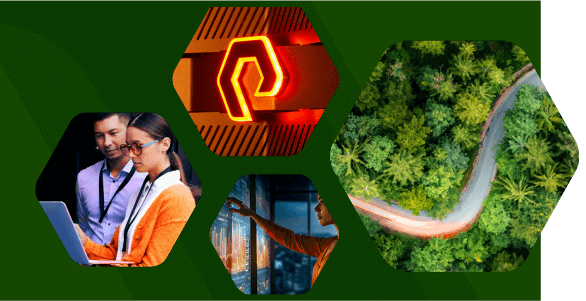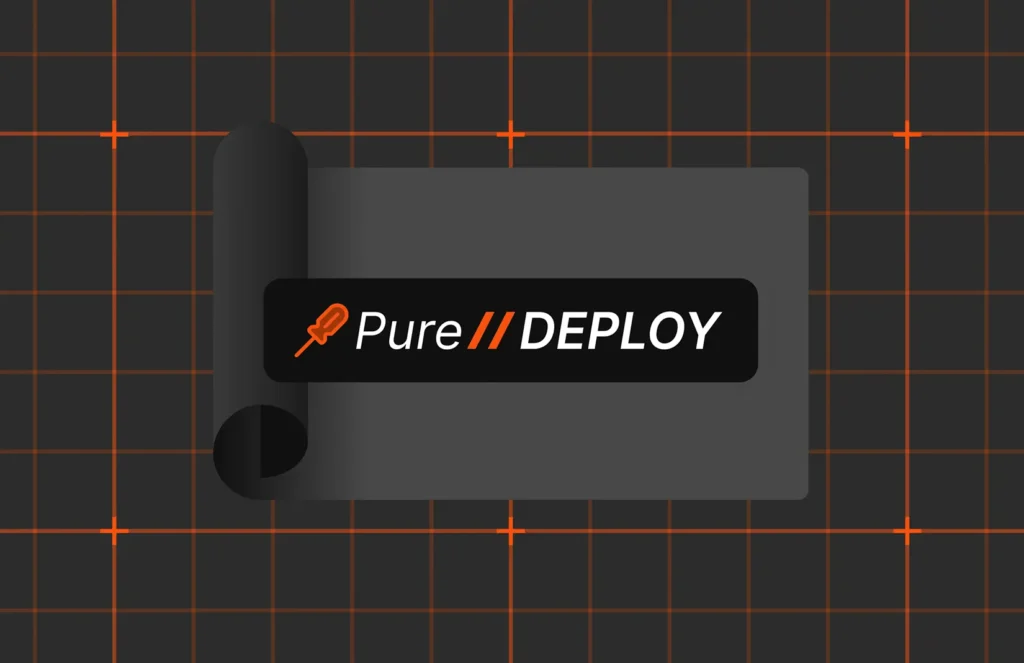The old saying, “They don’t make them like they used to,” implies newer products just aren’t built to last. On the other hand, does anyone want to keep old technology that can’t handle today’s challenges without breaking the bank — or the business — through inefficiency? Fortunately, choosing between old and new are no longer the only two choices. We can transform “old products” into “new products,” so that the original products never become out of date. It’s sustainable, affordable, way more efficient, and less disruptive to businesses. We can accomplish this “evergreen” approach to product development—as with our Evergreen™ products—because better science means better products. As enterprises tackle ambitious digital transformation and ESG initiatives in the coming years, it’s clear there’s an opportunity to make strides toward both—with the right technology.
The “E” in “ESG” stands for “environment”, but it might as well stand for “efficiency”, because what’s efficient is what’s good for the environment.
Discover how Efficient IT Infrastructure Saves More Than Just Energy Costs >>
Digital Transformation and the Human (Global) Experience
Modern IT infrastructures are key to digital transformation overhauls. They’re necessary to power the data-hungry apps and tools that embody transformation, but they’re also huge when it comes to human experience—the ultimate driver behind digital transformation. Modern technology can phase out old headaches, inefficiencies, and issues with each new generation, allowing people to do less low-level work, get creative time back, and focus more on what matters.
And what increasingly matters is greater energy resilience and environmental stewardship.
Today, enterprises are working with a new set of priorities tied to both business and the human condition: environmental sustainability. With recent volatility in energy prices and rising climate change vulnerability, companies can have a business need, a global responsibility, and even a regulatory obligation to address their utilization of natural resources. This requires solutions that not only meet performance requirements but also provide energy and emissions savings.

Modern Stacks Are Doing Double Duty in IT
Simply put, digital transformation and ESG are now overlapping objectives, and at their epicenter is IT.
Some of the best modern technologies might not have been designed with ESG in mind, but they were built from the ground up to be incredibly efficient: smaller, more powerful, and easier to use. This improved efficiency and resilience can help offset power utilization and costs in growing data centers, too.
High data growth and rising energy costs are the two key drivers of enterprises having to use more power and increase floor space, but it doesn’t have to be this way — and actually, it can no longer be this way because this way is no longer sustainable. Enterprises clearly can’t just continue to add commodity off the shelf (COTS) disk devices to their storage infrastructures and expect to stay within both their floor space and power budgets in the long.
This impacts both procurement and vendor decisions, and decision makers are looking to strategic infrastructure modernizations to address both concerns at once.
Growing Data Centers Are Prime Opportunities to Improve
When it comes to sustainability in the data center, IT has a unique opportunity to be a trailblazer in efficiency.
As data volumes grow, requiring more power and cooling from data centers, change will become even more necessary. According to a Gartner report, organizations will have a serious need to invest in next-generation storage technologies and heat-removal technologies to avoid a corresponding growth in energy use from a 23-fold increase in enterprise storage capacity through 2030.
When it comes to closing the deal on IT investments, most organizations prefer that all the boxes are checked. They want the technology to:
- Provide an intuitive experience for setup and upgrades
- Work without vendor lock-in
- Enable robust security against ransomware
- Future-proof for ESG objectives
- Offer the scale and performance needed for the most innovative and demanding applications
And, Efficiency Is Not Just about Cost
A study conducted by Pure Storage and Bredin Research of 500+ IT decision makers revealed that ESG initiatives are at the forefront in mission statements, supply chain decisions, operations, and more. It isn’t just to adhere to new regulations or curb costs from power utilization—it’s to align with what customers and employees care about and to do the right thing.
But “the right thing” won’t be as much a choice as a requirement, as carbon footprint imperatives and the rejection of new data center applications become more common. The survey found that 61% of respondents see sustainability initiatives as critical to the IT investment choices they make. If the choice is also tied to cost savings, however, almost half of those respondents (47%) will prioritize those sustainable investments.
To learn more about how efficient storage technology is helping organizations to reduce data center power and footprints, I urge you to read our whitepaper, Efficient IT Infrastructure Saves More Than Just Energy Costs.
As-a-Service Models Promote Sustainability in IT
According to the Pure/Bredin survey, IT decision makers are looking at as-a-service IT procurement as a way to improve sustainability because it allows them to procure only the infrastructure they use and avoid e-waste. Procuring infrastructure through this method delivers two key environmental benefits:
- Reduction in wasted energy of underused equipment: Upgrades in place avoid migrations that last months or years, during which both old and new arrays are consuming energy.
- Reduction in e-waste: Continual upgrade of array components only as needed eliminates the traditional standard of replacing (and junking) entire systems.
At Pure, we’ve applied the philosophy of e-waste reduction to all of our products, in addition to the Evergreen solutions. The Evergreen architecture allows for upgrades in place—reducing e-waste, avoiding years-long migrations during which both old and new arrays are consuming energy, and allowing customers to evolve products as their needs change without having to replace them.
In addition, Evergreen//Flex™ allows users to optimize capacity at fleet level, reducing the need for over-provisioning and therefore reducing energy consumption and waste. And our Evergreen//One™ solution delivers the ultimate benefits in energy efficiency by allowing customers to procure only the capacity that they need and expand it on demand as their needs grow. This way, customers can completely eliminate the need for over-provisioning.


Prioritize IT Efficiency and Transformation with Pure Storage
IT leaders need to keep sustainability top of mind in both procurement and transformation decisions. Anything less than this combination locks complexity in and also defeats the purpose of actual transformation that’s truly future-proof.
At Pure, sustainability isn’t an attribute; it’s an architecture. We’re committed to helping organizations achieve ESG and sustainability goals with an architectural design that makes a significant and immediate environmental impact in the data center.
Get the Paper: “Efficient IT Infrastructure Saves More Than Just Energy Costs”






